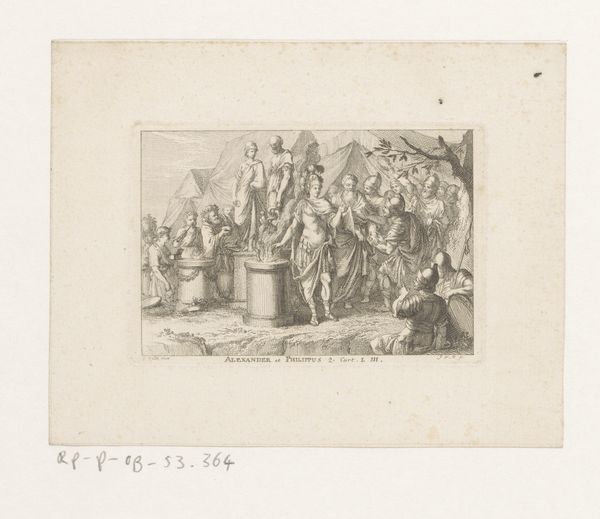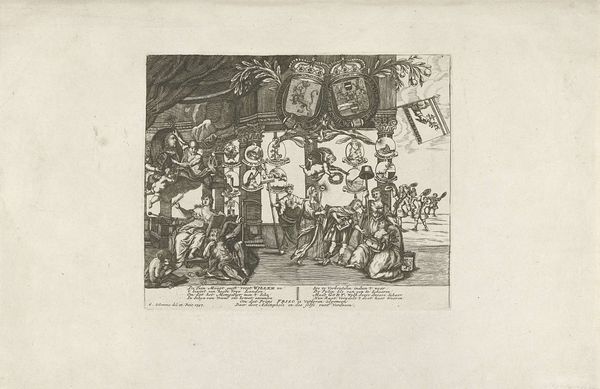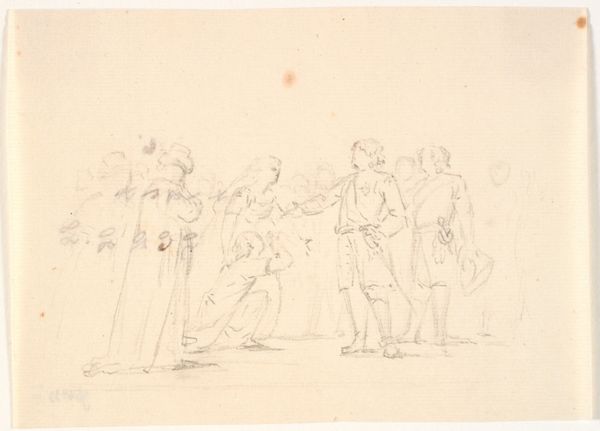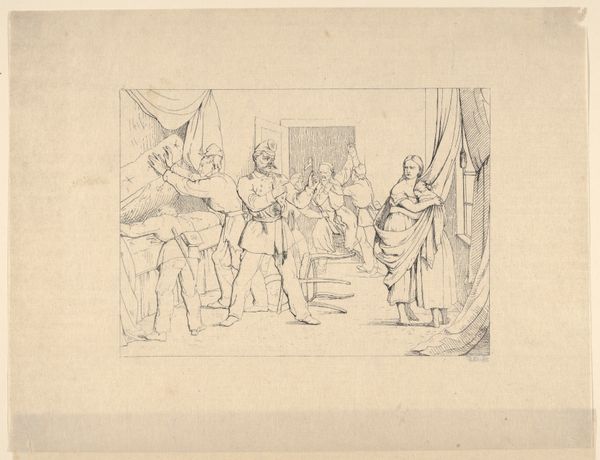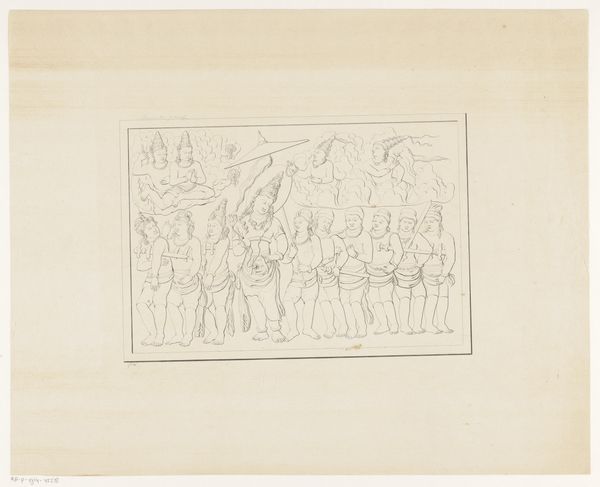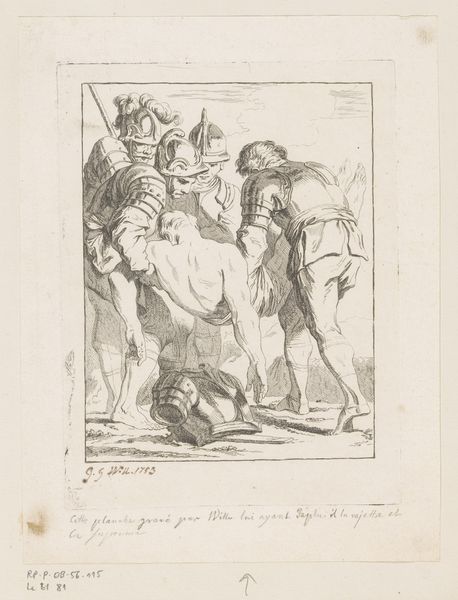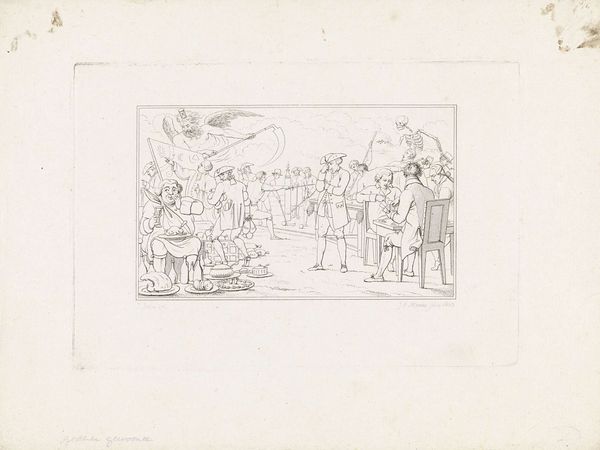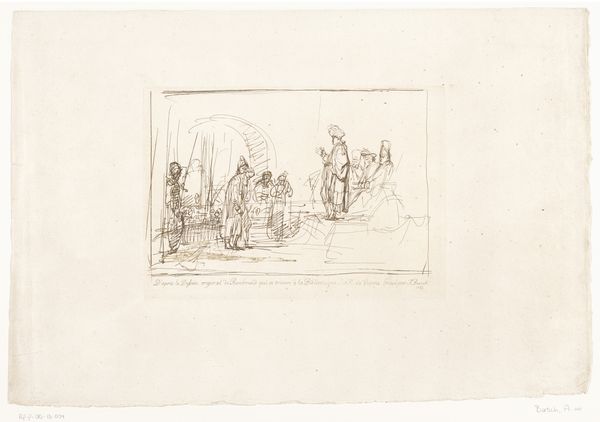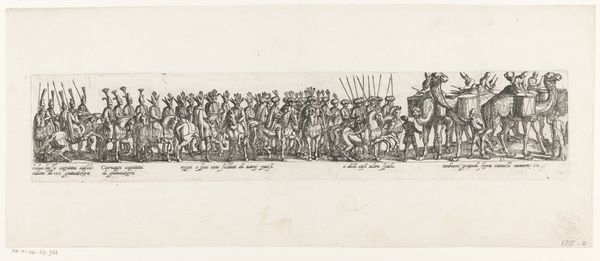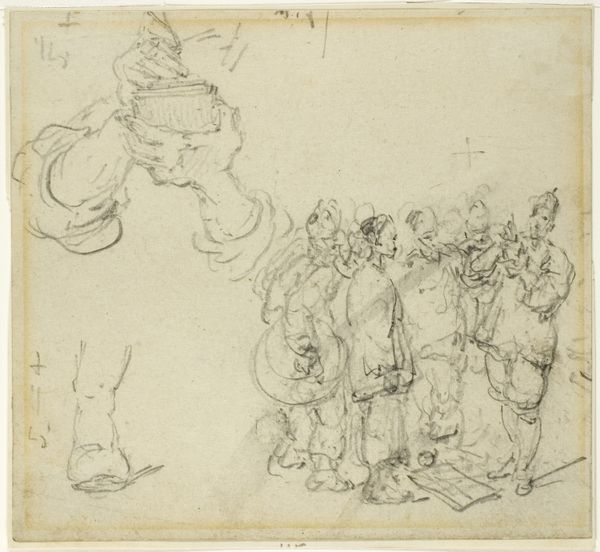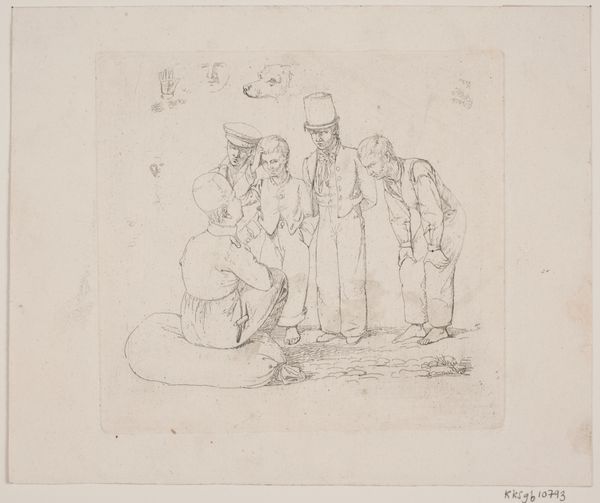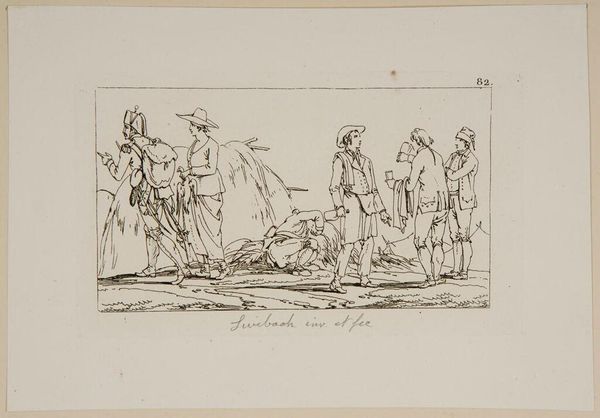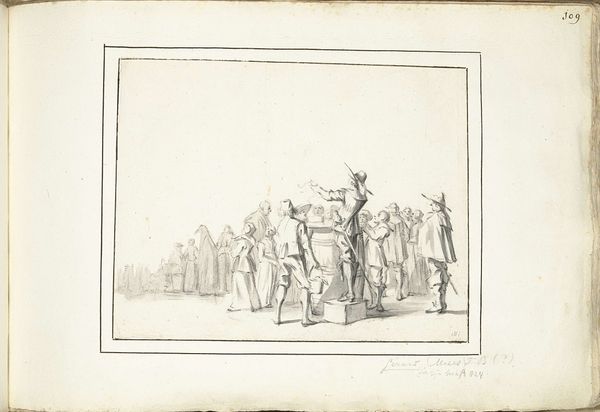
drawing, ink, pen
#
drawing
#
quirky sketch
#
caricature
#
hand drawn type
#
personal sketchbook
#
ink
#
idea generation sketch
#
sketchwork
#
ink drawing experimentation
#
pen-ink sketch
#
sketchbook drawing
#
pen
#
genre-painting
#
history-painting
#
sketchbook art
#
initial sketch
Dimensions: height 130 mm, width 195 mm
Copyright: Rijks Museum: Open Domain
This etching, Spotprent op de douaniers, was made by Jacob Smies in 1813. The image shows a group of customs officers, their expressions rather blank, standing in a line. Notice the rope tied around their middles. Here, the rope is a crude symbol of restriction, binding the men and, by extension, the Dutch people under French rule. Consider its resonance across time—from classical allegories of vice where figures are bound by ropes representing greed or lust, to more modern contexts where ropes signify constraint and oppression. This motif has morphed through history, shifting from religious allegory to political commentary, yet its visceral impact remains. Even subconsciously, the viewer recognizes the feeling of being limited. The artist evokes this primal fear, a feeling of being trapped and controlled, engaging us on a deep level. Ultimately, it's a testament to the enduring power of symbols; they resurface, evolve, and take on new meanings, all while echoing the past.
Comments
No comments
Be the first to comment and join the conversation on the ultimate creative platform.
